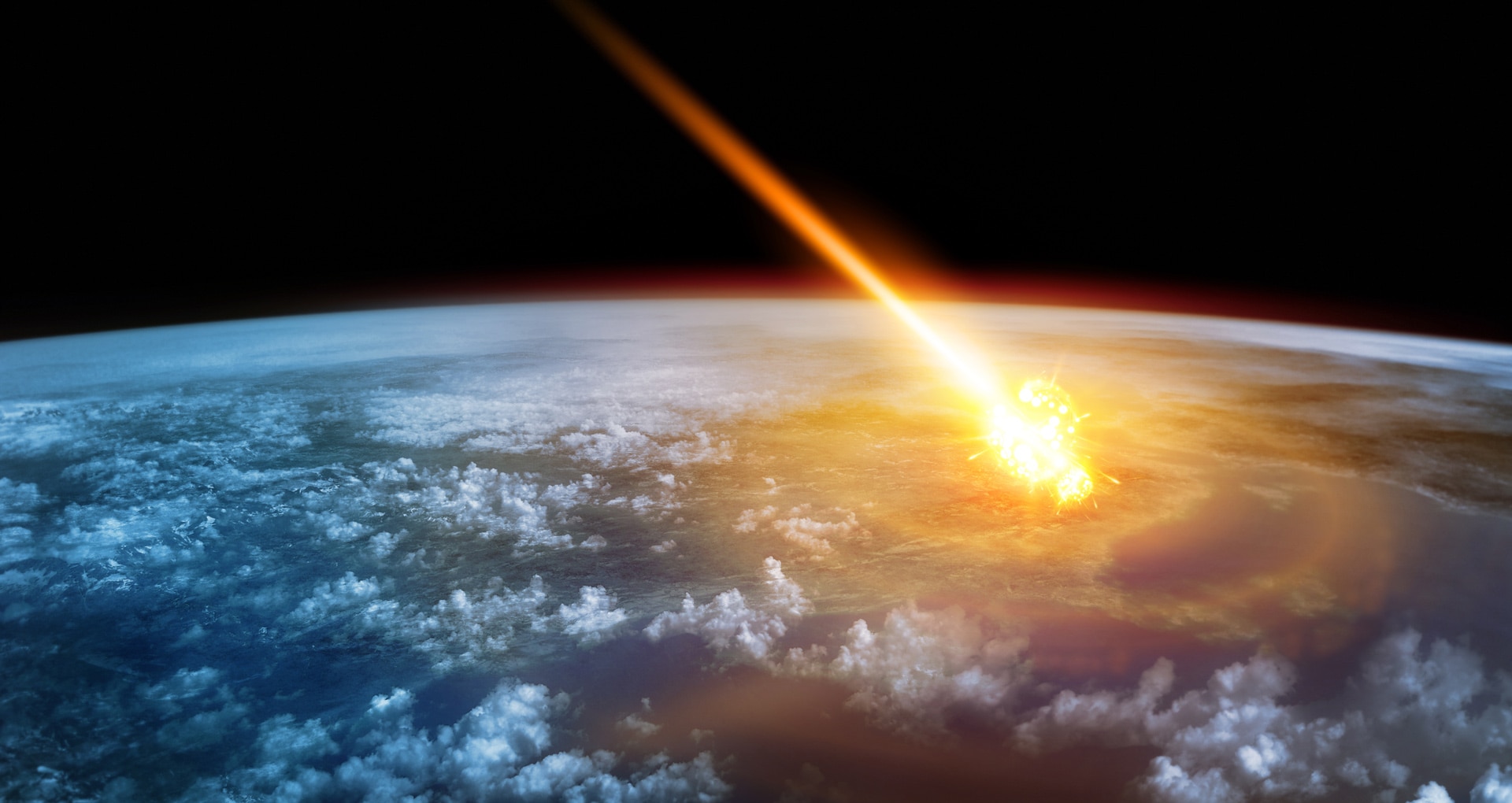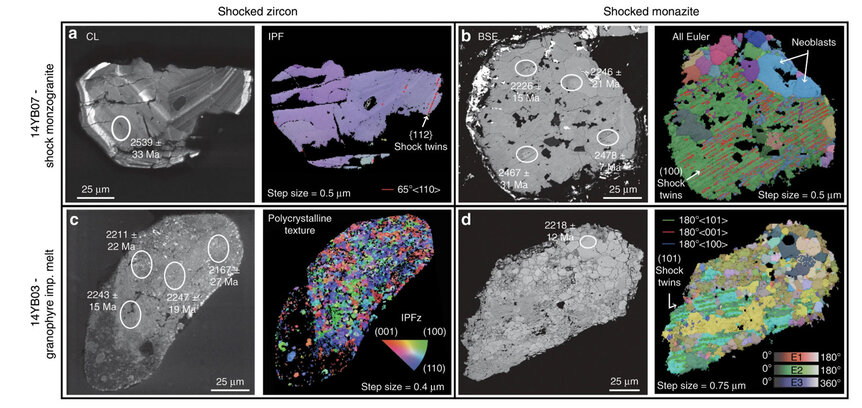Create a free profile to get unlimited access to exclusive videos, sweepstakes, and more!
Did a two-billion-year-old monster impact save the Earth from being a snowball?

In what is now western Australia, but 2.229 billion years ago, catastrophe struck Earth. Literally.
A 7-kilometer-wide asteroid slammed into our planet, within minutes carving out a huge crater 70 kilometers across. It released vast amounts of dangerous chemicals into the atmosphere, creating a secondary catastrophe. The immediate effects of a large impact are legion and obvious, but this second effect was a climatic catastrophe: All those chemicals (like water vapor) warmed the planet. Earth got so much hotter so quickly that the entire surface changed drastically: it melted.
But this was a good thing. At that time, Earth was locked in a global ice age, so when I say "melted" I mean the ice melted, freeing the Earth from its frigid grip.
At least, this is possibly what happened then. But it all comes back to that number, 2.229 billion years. Here's how this happened.
In western Australia, near what is now Meekatharra, is a strange clump of rocks called the Barlangi granophyre (a granophyre is a type of granite). From the air, scientists have mapped the magnetic field of that area, and found a magnetic anomaly about 20x11 km in size. In that area they also found samples of quartz, the crystal structure of which indicates it suffered a severe shock, undergoing huge pressures applied very rapidly. They've also found shatter cones, which are cone-shaped rocks that are created, again, under huge and sudden pressures.
Put this all together, and you get an impact crater. The granophyre is what remains of the central peak of the crater, a mountain in the middle that forms suddenly when rock flows like liquid under the huge pressures generated by the impact, and splashes up in the middle (we see these sorts of things in big lunar craters). The magnetic anomaly is from melted rock, and the shatter cones and quartz are smoking guns, if you will, of a big impact.
Judging from the size of the granophyre, the crater must have been 70 km across, formed from an impactor (an asteroid or comet) roughly 7 km wide. That area of Australia is incredibly old, some of it dating back over 4 billion years. The impact site, called the Yarrabubba crater, is known to be pretty old, too, but the age until now has been uncertain.
Using a more precise technique, scientists have finally nailed down an age for the crater. They found zircon crystals there, tiny crystals made of zircon silicate. These are extremely stable crystals, and have the happy property of containing uranium in them. Uranium decays radioactively into lead at a known rate, making it possible to use as a dating technique.
The better news is that when the ridiculous pressure and heat of an asteroid impact sweep through them, they lose the lead, which the crystals don't hold onto well, while keeping the uranium. That resets their radioactive clock; any lead in the crystal that forms must have done so after the impact. It was this that allowed the scientists to so precisely get the age of the crater: 2,229,000,000 years, with an uncertainty of only ±5 million years.
This makes Yarrabubba crater the oldest known impact structure on Earth, beating the Vredefort crater in South Africa by 200 million years.
But the timing is very interesting. There is a hypothesis, called Snowball Earth, which posits that there have been periods of cooling so severe that the Earth was essentially covered in ice, pole to pole (with at most some slushy seasonal stuff at the equator). This idea is by no means proven, but there is some pretty good evidence for it. One problem that some people have with it is how difficult it is to melt that ice once it forms. Ice is white and shiny, so it reflects sunlight back into space, keeping Earth cold.
There is evidence of deep glaciation in South Africa over two billion years ago, when that part of the continent was at low latitudes (nearer Earth's equator); this supports the idea that the entire Earth was ice-ridden at the time. This period ended something like 2.225 billion years ago, but nobody knows why.
But that date is within the uncertainty of the crater age! The scientists posit that the area the asteroid impacted was also covered in ice. Depending on the depth (several kilometers, most likely), the energy from the impact would have instantly vaporized something like 240 cubic kilometers (!!) of ice — that would weigh about 200 billion tons — and melted some 5,400 cubic km more.
A lot of that water vapor would have gone up into the atmosphere. Water vapor is an excellent greenhouse gas, so putting that much into the atmosphere (minus whatever rained/snowed out) may have been enough to warm the planet rapidly enough to unlock the ice age.
Mind you, this all supposition, but the new data giving the crater age supports it, and it all fits together. That's very interesting!
These sorts of impacts are scary, but the ones that happened in the past, even in the deep past (two billion years!) shaped our planet in a way that wound up eventually leading to us. So I'm selfishly happy they happened… I just don't want one to happen again. The last thing we need is even more warming from an impact, over and above the incredibly rapid warming we’re seeing now… and of course the immediate devastation from such an impact on us.
The past is the past. The future is, in many ways, up to us.




























